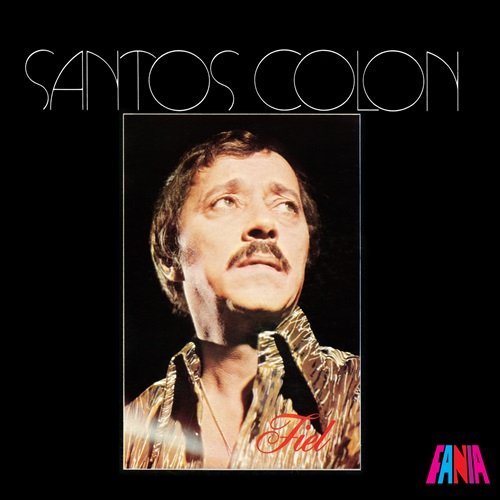Ludovica Rana, Maddalena Giacopuzzi - Ferruccio Busoni, Francesco Cilea, Giuseppe Martucci: Affresco Italiano (19th Century Italian Music with Cello) (2022)
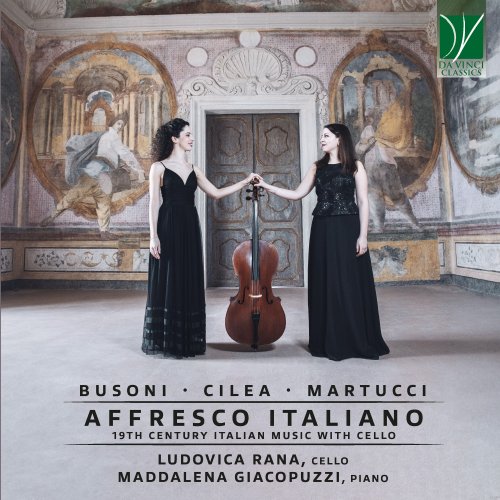
Artist: Ludovica Rana, Maddalena Giacopuzzi
Title: Ferruccio Busoni, Francesco Cilea, Giuseppe Martucci: Affresco Italiano (19th Century Italian Music with Cello)
Year Of Release: 2022
Label: Da Vinci Classics
Genre: Classical
Quality: flac lossless (tracks)
Total Time: 01:04:55
Total Size: 230 mb
WebSite: Album Preview
TracklistTitle: Ferruccio Busoni, Francesco Cilea, Giuseppe Martucci: Affresco Italiano (19th Century Italian Music with Cello)
Year Of Release: 2022
Label: Da Vinci Classics
Genre: Classical
Quality: flac lossless (tracks)
Total Time: 01:04:55
Total Size: 230 mb
WebSite: Album Preview
01. Kleine Suite, Op. 23: I. Moderato ma energico
02. Kleine Suite, Op. 23: II. Andantino, con grazia
03. Kleine Suite, Op. 23: III. Altes Tanzliedchen-Massig, doch frisch
04. Kleine Suite, Op. 23: IV. Sostenuto ed espressivo
05. Kleine Suite, Op. 23: V. Moderato ma con brio
06. Sonata in D Major, Op. 38: I. Allegro moderato
07. Sonata in D Major, Op. 38: II. Alla romanza
08. Sonata in D Major, Op. 38: III. Allegro animato
09. Sonata in F-Sharp Minor, Op. 52: I. Allegro giusto
10. Sonata in F-Sharp Minor, Op. 52: II. Scherzo, Allegro molto-Trio, Allegretto
11. Sonata in F-Sharp Minor, Op. 52: III. Intermezzo, Andantino flebile
12. Sonata in F-Sharp Minor, Op. 52: IV. Allegro
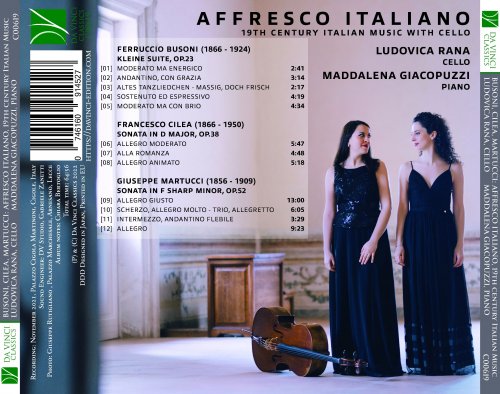
The three composers whose works are recorded in this Da Vinci Classics album have much in common, but also many differences. The first obvious shared element is their nationality, since all three were born in Italy. They also belong in the same generation, with Busoni and Cilea sharing the very same birth year, whilst Martucci was ten years older. Thirdly, they are among the comparatively few Italian musicians of the time who left major and significant works for the cello, and in particular for cello and piano.
Yet, as said above, many differences counterbalance these similarities, and they should be clearly considered when listening to this fascinating musical itinerary. The most important question one should ask, with regard to these three composers, is what was their “core business”, in a manner of speaking. In Francesco Cilea’s case, the question is easily answered: though he wrote many musical works in numerous genres and was active in many music-related activities, today he is best remembered for his operatic output. His Adriana Lecouvreur, in particular, has stood the test of time and has been uninterruptedly performed on stages worldwide since the time of its composition.
The question is more complex to answer in the case of the other two musicians. Of course, if one were to apply the same criteria as Cilea’s to Busoni, the reply would be: “transcription”. Indeed, if one asks the average concertgoer as concerns what is Busoni remembered for, the normal answer will be “Bach transcriptions”. Of course, Busoni’s Bach transcriptions are among the most magnificent examples in the art of transcribing ever written. But Busoni would rightly feel slighted if one were to reduce his multifaceted genius to that of an arranger. He was one of the greatest piano virtuosi of all times; he had an extremely cultivated and brilliant mind; thanks to his linguistic skills and to his numerous places of residences, he befriended many of the greatest musicians and thinkers of the time; he could write deeply and fascinatingly about aesthetics and composition; he was a philosopher of music, teacher, and courageous organiser of musical and cultural initiatives. His own compositional output was his greatest pride and joy, although it failed to attract all the attention it deserved at Busoni’s time. This was Busoni’s great wound, but did not prevent him from creating a vast oeuvre ranging from opera to instrumental music to religiously inspired works.
Virtuosity and internationality also characterise the life of Giuseppe Martucci, whose beginnings in the musical world were those of a child prodigy at the piano. In Naples, near to which he had been born, he attended the local Conservatory (which was, and still is, one of the most important musical centres in Italy), but was soon withdrawn by his father who (similar, indeed, to Busoni’s own father) wished to display his talent on the international stage. After some years as a touring virtuoso, Martucci seemingly settled for a less demanding lifestyle, but actually found his true vocation in so doing. He became one of the leading figures in the Italian renaissance of instrumental music, promoting it in a number of ways: through his activity as a conductor of repute, who was not afraid of championing the works by Bach at a time when their performance was exceptional or unique; as a distinguished teacher; as the Director of several of the most important Italian Conservatories (in Bologna, he paved the way for Busoni’s own directorship); and, of course, as a composer of genius in his own right.
In spite of these differences, these three composers were clearly unafraid of going against the tide, or rather to seek and promote a new insight on music in their homeland. For the entire nineteenth century, Italy had been musically (and not just musically!) dominated by opera. And whilst these composers were absolutely not against opera, they also understood that instrumental music (and particularly chamber music) could find an Italian language of its own, rather than merely representing a “translation” of an imported, foreign style. This was particularly important at a time when Italy, as a nation, was still extremely young (it was “born” exactly in between the birth dates of our composers, in 1861), and was far from obtaining all lands it claimed as its own (World War I would be fought with this goal in mind). Thus, an artistic “product” which was felt as foreign, as alien, as non-indigenous, was doomed to unsuccess from the outset. It was necessary to find a genuinely Italian vein for chamber music.
And the cello was the ideal torchbearer for this cultural programme. It is unanimously acknowledged that the cello is the musical instrument which most closely resembles the human voice, in its warm timbre, expressivity, ductility and variety. A people enamoured with opera could easily recognise itself in the singing tones of the cello. And this was precisely what these three composers intuited, and fully realised, with these three magnificent works.
As said above, Busoni would likely have taken offense had his creative activity been simply reduced to that of a (Bach) transcriber. Yet, he could not (and certainly would not) have denied that Bach was and had always been a source of great inspiration for him. Written (as the other works in this album) by a composer in his twenties, it clearly shows Busoni’s admiration for the Baroque master and his thorough knowledge of Bach’s output and compositional techniques. Busoni did not intend to write a fake Baroque suite, but yet comes close to this; the composer never hides his own style and its fascinating modernity, but without seeking it for its own sake. Behind the movements’ titles and features, those of their Baroque ancestors are clearly discernible: the spirited traits of a courante are glimpsed behind the features of the opening Moderato ma energico. A style reminiscent of Bach’s most touching and inspired Arias is found in the graceful and light Andantino con grazia, whilst the model for the following Mässig, doch frisch may be found in some of the most capricious and fanciful suite movements in the Baroque master’s output. The more serious, composed, expressive and lyrical tone of the Sostenuto is clearly derived from Baroque Sarabandes, which powerfully appealed to Busoni’s innate sense of elegance and refinement. The concluding Moderato ma con brio may seem, at first sight, to break with the Baroque model and to look back to a more recent, Romantic past, as might be embodied by Schumann’s masterful treatment of the cello and piano duo. Yet, Schumann was one of the greatest admirers of Bach’s music in his time, and was one of the protagonists of the Bach reception in the first half of the nineteenth century. In a manner of speaking, then, this last movement of Busoni’s Kleine Suite can be said to represent “Bach as seen by Schumann”, or “Bach through the lens of Schumann”.
The love for Bach was shared by the teachers with whom Cilea studied in Naples, where he was taught by Paolo Serrao, and by Beniamino Cesi, one of the first Italian editors of Bach. Both had also been Martucci’s teachers, respectively of composition and piano. The cantabile style which would lead Cilea to immortal fame as an operatic composer finds an ideal outlet in this impressively precocious Sonata. This large-scale, ambitious work of a still very young composer opens with a notable spontaneity, and demonstrates the musician’s firm grip on the secrets of the Sonata form. The lyrical vein of the composer is abundantly effused in the touching second movement, characterised by a sombre but enchanted atmosphere, framing a central section characterised by a more animated style.
The “Romantic” soul of the composer, however, is by no means his only expressive tool: the last movement, perhaps the most forward-looking of the three, seems to go beyond the boundaries of Romantic expressiveness, and to suggest, in its sound and language, the novelties of the French impressionism. A remarkable trait of this compelling Sonata, furthermore, is Cilea’s robust handling of the delicate balance between the two instruments.
A comparable skill is demonstrated by Martucci, who adopted a very traditional form for his own Sonata, but, at the same time, affirmed his individuality and personality in a highly convincing fashion. In particular, the cello’s singing voice encouraged Martucci (as Cilea) to experiment with the “accompanying” harmony, and to explore some uncommon venues of the tonal language. Martucci’s own career as a piano virtuoso clearly influences the highly demanding scoring of the piano part, but this never suffocates the spontaneity of the cello’s scoring. This is evidently shown in the first movement, where the cello expresses both its fiery personality and its tenderness in the juxtaposition of the two themes of the Sonata forms. The Scherzo manages to combine a Beethovenian, or Brahmsian, vitality and rhythmic elan, with an inspiration which clearly reveals Martucci’s Neapolitan origins (particularly in the Trio). The short slow movement is inspired by a tender sadness, which is quickly dispelled by the enthralling Finale, with its whirlwind of technical prowess and musical frenzy.
Together, these three works and their composers bear an eloquent witness to the vitality and freshness of the Italian cello repertoire at the fin de siècle, and invite us to the rediscovery of this rarely performed repertoire.
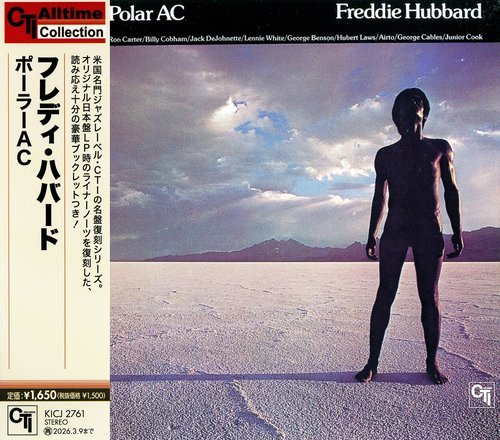

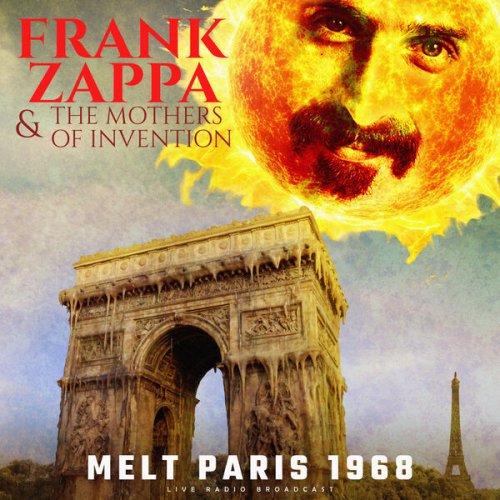
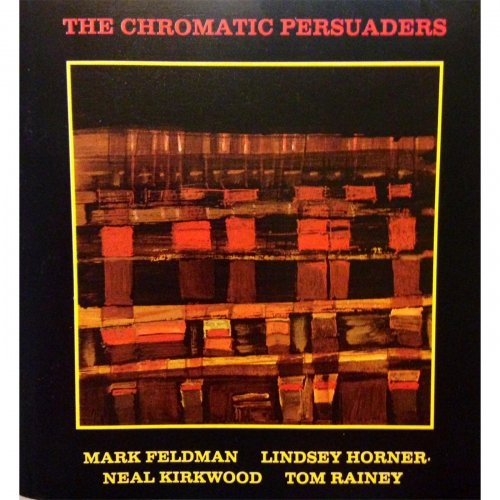
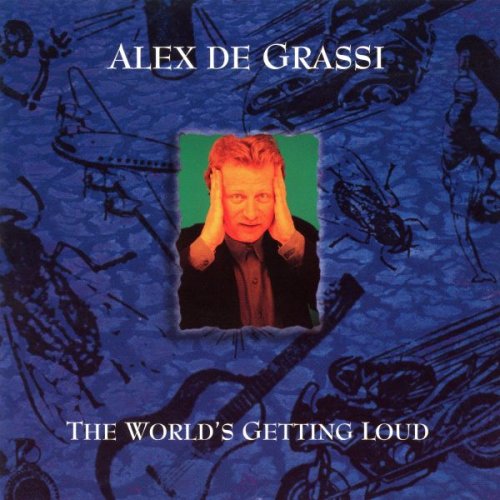
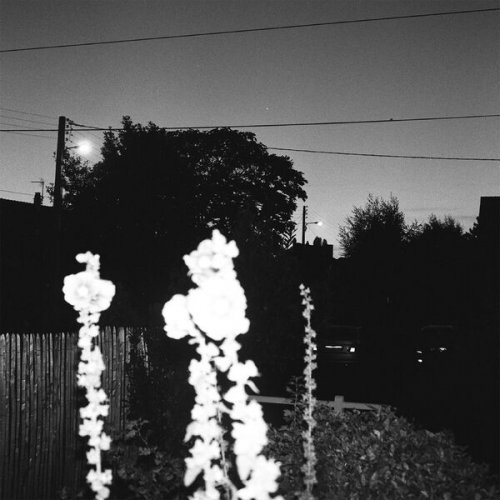
![Murmurosi - Svitanok (2025) [Hi-Res] Murmurosi - Svitanok (2025) [Hi-Res]](https://img.israbox.com/img/2025-12/25/1tsrji7qrpb85qha0oar89rw8.jpg)
![VA - Who Loves You? A Tribute To Jaco Pastorius (2003) [Hi-Res] VA - Who Loves You? A Tribute To Jaco Pastorius (2003) [Hi-Res]](https://www.dibpic.com/uploads/posts/2025-12/1766570996_r8byrhmtd2qlc_600.jpg)
